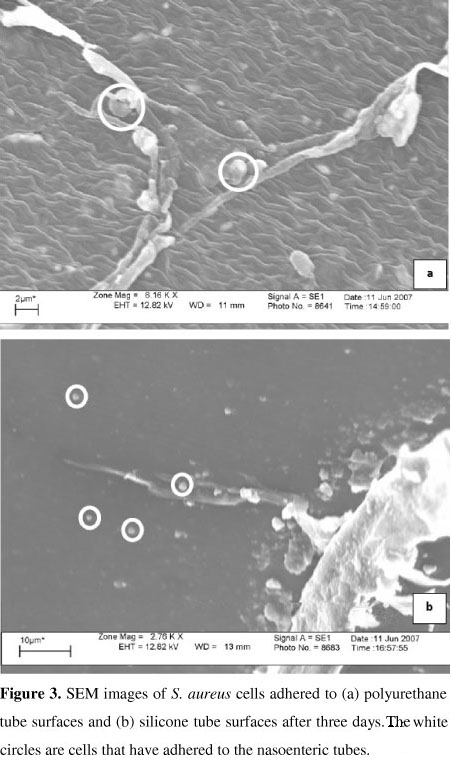In this study, we examined the physiochemical properties of nasoenteral feeding tubes made from two different types of polymer: silicone materials and polyurethane. The internal surfaces of the nasoenteral feeding tubes were analyzed for their hydrophobicity, roughness, microtopography, rupture-tension and ability to stretch. We also studied the adhesion of an isolated, multi-drug resistant strain of S. aureus to these polymers. The polyurethane nasoenteral tube, which was classified as hydrophilic, was more resistant to rupture-tension and stretching tests than the silicone tube, which was classified as hydrophobic. Additionally, the polyurethane tube had a rougher surface than the silicone tube. Approximately 1.0 log CFU.cm-2 of S. aureus cells adhered to the tubes and this number was not statistically different between the two types of surfaces (p > 0.05). In future studies, new polymers for nasoenteral feeding tubes should be tested for their ability to support bacterial growth. Bacterial adhesion to these polymers can easily be reduced through modification of the polymer's physicochemical surface characteristics.
Staphylococcus aureus adhesion; nasoenteral tubes; hydrophobicity; roughness and mechanical resistance



